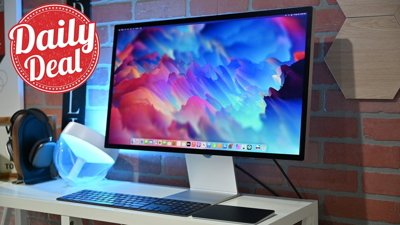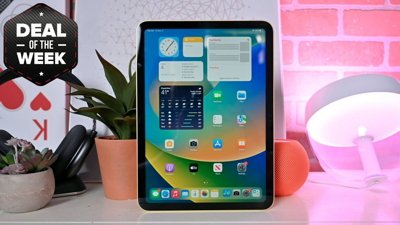Intel said Monday that president and CEO, Paul Otellini, has elected to retire as an officer and director of the company effective next May.
Otellini’s retirement caps a career of nearly 40 years of continuous service to Intel and its stockholders. His distinguished tenure includes eight years as CEO, during which he is credited with managing the company through challenging times and market transitions. In a statement Monday, Otellini said he plans to remain an advisor to the company's management following his retirement.
"I’ve been privileged to lead one of the world’s greatest companies," Otellini said. "After almost four decades with the company and eight years as CEO, it’s time to move on and transfer Intel’s helm to a new generation of leadership."
Over the next six month, Otellini will work with Intel's chairman Andy Bryant and senior management on a leadership transition that will include a CEO search conducted by the company's board of directors. Intel says it plans the consider both internal and external candidates for the chip maker's top seat.
In addition, Intel also announced Monday that the board has approved the promotion of three senior leaders to the position of executive vice president: Renee James, head of Intel’s software business; Brian Krzanich, chief operating officer and head of worldwide manufacturing; and Stacy Smith, chief financial officer and director of corporate strategy.
While presiding as CEO from the end of 2005 through the end of 2011, Otellini helped grow Intel's annual revenue from $38.8 billion to $54 billion, and generated cash from operations in excess of $100 billion.
Shortly after assuming to leadership role at Intel, Otellini teamed with late Apple co-founder Steve Jobs to help shift the Mac away from PowerPC processors and towards Intel's — a transition that helped fuel Apple's resurgence in the PC market. He's also credited with transforming Intle's operations and the cost structure for long-term growth, as well as achieving breakthrough innovations like High-K/Metal gate, 3-D Tri-gate transistors, and dramatic improvement in energy efficiency of Intel processors.
 Katie Marsal
Katie Marsal








 William Gallagher
William Gallagher

 Christine McKee
Christine McKee
 AppleInsider Staff
AppleInsider Staff
 Chip Loder
Chip Loder

 Malcolm Owen
Malcolm Owen









22 Comments
Wondering if there could be any chance of a come back from Pat Gelsinger. Paul Otellini has actually brought x86 to Apple Desktop. I think one of the important thing Apple sticks to ARM is more about control then saving money. No longer would a change of leadership in Intel has any effect on Apple's major business which is the mobile devices. I just hope a change of management would bring Intel's Fab to Apple.
[quote name="ksec" url="/t/154436/intel-ceo-paul-otellini-to-retire-in-may#post_2234559"]I think one of the important thing Apple sticks to ARM is more about control then saving money.[/quote] According to the Otellini in Isaacsons' bio, it was partially about the high price which let Apple to not use an Intel processor in the iPad: [I]"Since the Macintosh computers were now using Intel chips, Jobs initially planned to use in the iPad the low-voltage Atom chip that Intel was developing. Paul Otellini, Intel’s CEO, was pushing hard to work together on a design, and Jobs’s inclination was to trust him. His company was making the fastest processors in the world. But Intel was used to making processors for machines that plugged into a wall, not ones that had to preserve battery life. So Tony Fadell argued strongly for something based on the ARM architecture, which was simpler and used less power. Apple had been an early partner with ARM, and chips using its architecture were in the original iPhone. Fadell gathered support from other engineers and proved that it was possible to confront Jobs and turn him around. “Wrong, wrong, wrong!” Fadell shouted at one meeting when Jobs insisted it was best to trust Intel to make a good mobile chip. Fadell even put his Apple badge on the table, threatening to resign. Eventually Jobs relented. “I hear you,” he said. “I’m not going to go against my best guys.” In fact he went to the other extreme. Apple licensed the ARM architecture, but it also bought a 150-person microprocessor design firm in Palo Alto, called P.A. Semi, and had it create a custom system-on-a-chip, called the A4, which was based on the ARM architecture and manufactured in South Korea by Samsung. As Jobs recalled: At the high-performance end, Intel is the best. They build the fastest chip, if you don’t care about power and cost. But they build just the processor on one chip, so it takes a lot of other parts. Our A4 has the processor and the graphics, mobile operating system, and memory control all in the chip. We tried to help Intel, but they don’t listen much. We’ve been telling them for years that their graphics suck. Every quarter we schedule a meeting with me and our top three guys and Paul Otellini. At the beginning, we were doing wonderful things together. They wanted this big joint project to do chips for future iPhones. There were two reasons we didn’t go with them. One was that they are just really slow. They’re like a steamship, not very flexible. We’re used to going pretty fast. Second is that we just didn’t want to teach them everything, which they could go and sell to our competitors. According to Otellini, it would have made sense for the iPad to use Intel chips. The problem, he said, was that Apple and Intel couldn’t agree on price. Also, they disagreed on who would control the design. It was another example of Jobs’s desire, indeed compulsion, to control every aspect of a product, from the silicon to the flesh." [/I]
Hey Forstall, here's a job opening for you. They could use someone young who has an intimate knowledge of how computer software works and direct the hardware to suit. If that means fabricating ARM chips, make it happen. http://arstechnica.com/business/2011/05/intel-to-fab-arm-chips-for-apple-its-possible/ I'd hope that Intel focuses more on graphics going forward and stops making so many chip variations: http://ark.intel.com/products/codename/29900/Sandy-Bridge
The problem, he said, was that Apple and Intel couldn’t agree on price.
Intel published prices:
- Intel Core i3 processor: $117
- Intel Core i7 processor: $999
iSuppli estimate:
- Apple A6 processor: $17.50
Full Forbes.com article:
http://www.forbes.com/sites/timworstall/2012/10/22/could-apple-use-intel-for-arm-chips-instead-of-samsung/
Also, they disagreed on who would control the design. It was another example of Jobs’s desire, indeed compulsion, to control every aspect of a product, from the silicon to the flesh."
Judging by how well Apple has engineered AX performance, while reducing power consumption, while keeping heat production to a minimum, I'd say Steve was right. Meanwhile, Microsoft is struggling with the Surface for Windows 8 Pro, with its red-hot Intel CPU that requires a fan and "Perimeter Venting" all around the edge of the Surface tablet.
That $278 million purchase of PA Semi followed by $121 million for Intrinsity, specifically for the development of the AX SoC line, look like brilliant moves in comparison. Especially since Apple appears to be on track to have a 64-bit A7 processor in two years. It's possible that the iPhone and iPad will have duo-core 64-bit A7 SoCs in 2014 and MacBook Air will have quad-core 64-bit A7 SoCs by around 2015. Macs of their own design, running an OS of their own design, on CPUs of their own design, is certainly Apple's "holy grail." That would keep their hardware costs down, allow them to undercut Intel-based PCs with $1000 Intel CPUs, and allow Apple to optimize their hardware and software for each other.
I also have read this quote from SJ bio, but I find difficult to believe it was a cost issue that prevent to use an Intel processor within the iPad.
No x86 chips as ever had an TDP below 5watts, even today Atoms are still rating at 10watts where all CPU Apple has ever use on the iPhone and iPad got a TDP around 1watt.
Let's face it the legacy x86 architecture is way behind ARM processors in term of power efficiency and there is no way to fixe it without a major redesign.